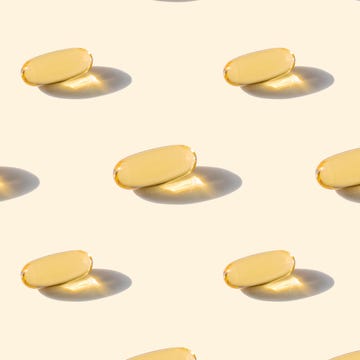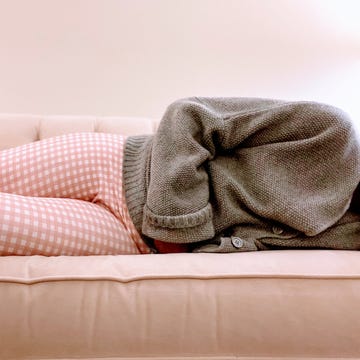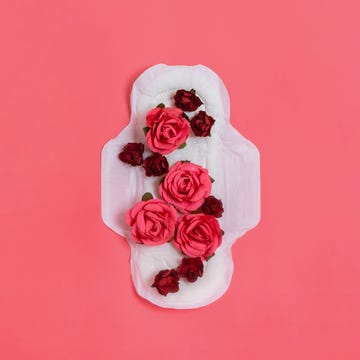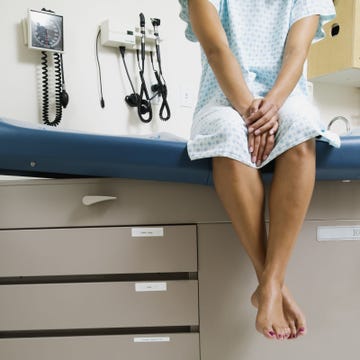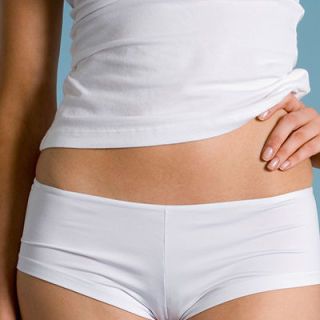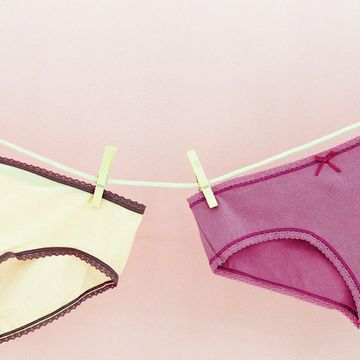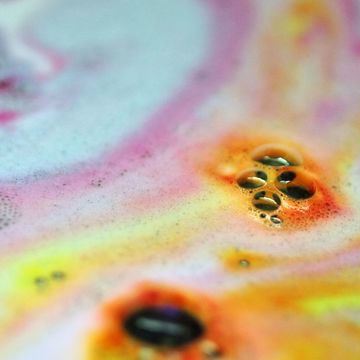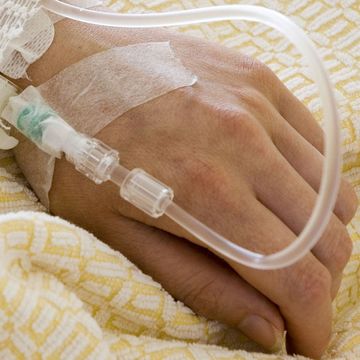Fact: If you have a vagina, at some point it's going to itch. And that will not only make you squirm in your seat as you try to sit through a meeting, movie or parent-teacher conference, but it might make your head spin with all kinds of worried thoughts — especially if it's accompanied by other symptoms, such as bumps or a vaginal rash. But, deep breath, most vaginal itching can be treated and soothed quickly, making you more comfortable in no time.
Causes of vaginal itching
There are as many causes of vaginal itching as there are styles of underwear (which, BTW, is sometimes the cause). These include:
The best home remedies for vaginal itching
1. Take a sitz bath
We like any good excuse for spending some alone time relaxing in a tub. Dr. Susan S. Khalil, M.D., an OB/GYN who serves as an obstetrics and gynecology director at the Icahn School of Medicine at Mount Sinai, recommends taking a sitz bath to relieve vaginal itching. This is a warm, shallow bath designed to bathe the anal and genital areas, including the perineum (the area in between). You can buy a sitz bath kit that fits over your toilet bowl, or simply fill a clean bathtub with a couple of inches of lukewarm or cool water (avoid overly hot water), then soak in it for 15 to 20 minutes, and gently patting the area dry.
2. Add baking soda to your bath
Beyond a simple sitz, soaking in baking soda can also be an effective way to treat vaginal itching, says Dr. Khalil. Commonly used to help with skin conditions such as eczema, baking soda is specifically known to have antibacterial and anti-fungal effects — in fact, a Current Microbiology study showed that it kills Candida bacteria, one of the root causes of yeast infections. "It works by changing the PH [of your vagina], which makes the environment not suited for an infection," Dr. Khalil adds.
Experts at the University of Iowa Hospitals and Clinics recommend dissolving 4 to 5 tablespoons of baking soda in the bath, and soaking 1 to 3 times a day for up to 10 minutes. If you're taking a sitz bath, use just 1 to 2 teaspoons of baking soda.
3. Apply hydrocortisone cream
If your doctor assures you the itching is NOT due to a fungal infection such as yeast, you can go ahead and try an over-the-counter hydrocortisone cream, a steroid that's used to treat a variety of skin conditions including eczema, rashes and allergies. Be careful to apply this cream only on the vulva, and not inside your vagina. But, once again, this is only if you're sure you don't have a yeast infection. "If you have a fungal infection, steroids could exacerbate the condition," Dr. Sholes-Douglas warns.
4. Use an antifungal cream
Now, if your doctor confirms you actually DO have a fungal or yeast infection in your vagina, you can use over-the-counter antifungal creams such as Clotrimazol to treat it, Dr. Sholes-Douglas says, though she warns you not to self-treat without a diagnosis: "Often women assume that the itching is yeast related and over-treat with these creams," she says. According to the American College of Obstetricians and Gynecologists (ACOG), using a medication for a yeast infection, in that case, may not work — in fact, it can also cause a delay in the proper diagnosis and treatment of the actual issue.
But for those with a yeast infection, vaginal clotrimazole can work. It's typically used for three to seven days in a row, and stops the growth of fungi that cause infection. Unlike hydrocortisone cream, antifungal creams are meant to be inserted inside the vagina — though the cream can also be applied to the external skin around the outside of the vagina.
5. Eat yogurt and probiotics
You may have heard that eating food that contains probiotics, or taking probiotic supplements, can promote the growth of “healthy” bacteria in your gut — but the extra good news is that it might be beneficial for vaginal health, too. Ongoing research suggests that there might be a connection between the gut microbiome and the vaginal microbiome — in fact, specific probiotics have been shown in human trials to fight bacterial infections of the vaginal and urinary tract.
"Eating yogurt and probiotics can help keep the vaginal flora in balance as it keeps the gut flora in balance," Dr. Sholes-Douglas explains. But you'll also want to keep a close eye on the nutrition labels. "Avoid yogurts with high sugar content — you will override the benefit with too much sugar," she says. Other great sources of probiotics include fermented foods and drinks such as pickles, sauerkraut, kimchi, buttermilk, cottage cheese, kombucha and kefir (a fermented dairy drink).
6. Apply a cold compress
You can cool down the itch of a yeast infection — literally — by using an ice pack or an over-the-counter cooling pad — just make sure to wrap it in a towel or washcloth first, rather than applying it directly to your skin.
7. Try a vaginal moisturizer
As we go through the changes of perimenopause and menopause, vaginal dryness can cause discomfort and itching. Applying an over-the-counter vaginal moisturizer, such as Replens, can help. These medications increase moisture around and inside the vagina while strengthening vaginal tissues.
8. Stop using fancy scents on your vagina
They may smell nice or look pretty, but many women end up using a ton of what experts consider to be unnecessary products. Your vagina cleanses itself naturally by putting out healthy, normal vaginal discharge — so it's really not necessary to use any sort of special soap or spray to keep it clean. The best way to keep clean down there is simply to rinse with warm water and gently pat (don't rub!) dry. Douching is not recommended unless prescribed by your doctor, as it can upset the natural balance of bacteria in your vagina.
The same goes for any menstrual products you might be using — opt for 100% cotton menstrual pads, tampons or even consider period underwear.
Additionally, you'll want to be careful of the detergent you're using when washing your undergarments, says Dr. Khalil. Cleveland Clinic officials recommend using a mild soap and not using too much detergent for washing intimates, and avoiding fabric softeners (including dryer sheets) and detergents with enzymes.
9. Opt for cotton underwear
When it comes to your undergarments, you'll want to avoid certain fabrics that can exacerbate your itching — Dr. Khalil recommends choosing underwear made of 100% cotton, which is breathable and gentle on the skin. Some synthetic materials, like nylon, can trap heat and moisture, which can create the optimal breeding ground for a yeast infection.
FAQ:
When should you see a doctor for your vaginal itching?
"Patients should see healthcare providers or physicians if they have itching that does not resolve," despite home care, or if there is swelling or pain that is not resolving, says Dr. Khalil. It's also a good idea to see a doctor "if the [itchiness] is something new that they have not encountered in the past," she adds.
What should I avoid if I have vaginal itching?
Things to skip or limit to keep yourself comfortable:
- Perfumed bath and feminine hygiene products (such as soap, bubble bath, sprays or cream)
• Tight leggings, pantyhose, or jeans
• Sitting around in wet swimsuits
• Scented or colored toilet paper
• Scented menstrual products, such as tampons or pads
Will Vaseline stop vaginal itching?
Petroleum jelly is considered a safe moisturizer to use on the vagina to soothe itching. Though, experts caution that it's important to avoid using it at the same time you're using latex condoms to protect against pregnancy and STIs. The sticky stuff can weaken the latex, and then you might wind up with a much more serious problem than just itching.
How long does vaginal itching usually last?
Though it depends on the underlying cause, with proper treatment you can expect to find relief in two weeks or less — though always check in with your doctor if you have any lingering concerns.
Hannah Jeon is an Associate Commerce Editor at Prevention, where she covers expert-driven commerce content for all things health, beauty, and wellness. Previously the Editorial Assistant at Good Housekeeping, she earned her bachelor’s degree in creative writing and psychology from Johns Hopkins University. When she’s not on the hunt for all the best products online, you can often find her trying out new food spots in New York City or clicking away behind a camera.
Dr. Kiarra King, M.D. is a Chicago based obstetrician gynecologist. She received her undergraduate degree from the University of Michigan (Ann Arbor) and her medical degree from the University of Illinois (Chicago). She completed her residency in obstetrics and gynecology at Advocate Illinois Masonic Medical Center in Chicago, Illinois. Dr. King is board certified through the American Board of Obstetrics and Gynecology.
She passionately cares for women throughout their lives and believes that education is empowerment. She is a sought after media expert in the women’s health and wellness space, speaker and digital content creator in the fashion, wellness and lifestyle spaces. Through her social media platforms, Dr. King actively works to ensure her community is informed through relatable content. Dr. King’s mission is to live a life that inspires those around her to embrace their given beauty, optimize their health and walk in their purpose.


